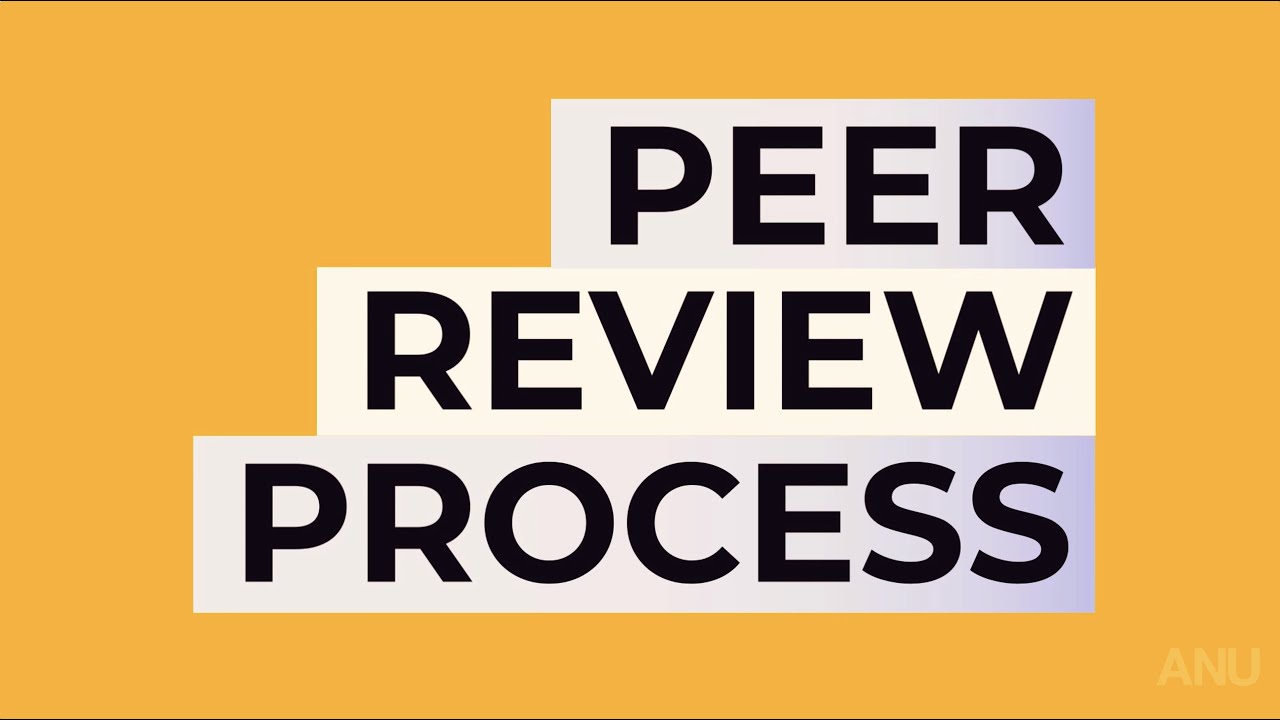The Scientific Peer Review Process - Why It Is Important For Research Quality
Peer reviewis the evaluation of work by one or more people with equivalent skills to the producers of the work.
Before a paper is published, it must first go through a process known as peer review, which is an evaluation of the document's overall quality.
To assist editors in deciding whether a submitted paper should be published in their journal, academics working in the relevant study field evaluate the submissions for originality, validity, and importance.
Peer review validates research, creates an evaluation system, and improves networking possibilities among research groups.
It functions as self-regulation by competent members of the appropriate profession.
Peer review methods are used to maintain quality standards, improve performance, and build a reputation.
Scholarly peer review is often used in academia to determine if academic work is publishable.
We employ a one-of-a-kind collaborative peer review process that is quality-focused.
What Is Peer Review?
Peer review is the process of subjecting an author's academic work, research, or ideas to the scrutiny of others who are experts in the same field.
Peer review is intended to serve two purposes.
It acts as a filter, ensuring that only high-quality research is published in prestigious journalsby assessing its validity, significance, and originality.
Second, peer review improves the quality of manuscripts accepted for publication.
Peer reviewers provide authors with feedback on improving the quality of their articles and identify any issues that must be addressed before publication.
Peer review has become a cornerstone of the academic publishing system because it effectively examines an author's work by other experts in the field.
Consequently, it encourages authors to pursue high-quality research that improves the field.
Peer review also helps to develop and maintain scientific integrity and authenticity.
A scientific hypothesis or assumption is usually not accepted by the academic community until published in a peer-reviewed journal.

What is Peer Review?
What Is The Main Purpose Of Peer Review?
The purpose of peer review is to assess the validity, quality, and, in certain situations, originality of works submitted for publication.
IIts ultimate purpose is to maintain scientific integrity by weeding out invalid publications or poor quality.
Peer review acts as a content filter for publishers, directing higher-quality articles to higher-quality journals and helping to develop journal brands.
Running papers via the peer review process increases their worth.
As a consequence, publishers must ensure thorough peer review.
How Does The Peer Review Process Work?
The following is how the peer review process works:
- The author submits the work to the editor first.
- The editor has two options:
i) reject the paper and return it to the author, or ii) send it to the peer reviewer of choice (s)
- The process for peer review starts. The reviewer provides feedback, pointing up any significant or minor flaws in the content and advising on what modifications should be made.
- Finally, the author receives the revised work. They make the required revisions and resubmit it for publication to the editor.

Peer Review Process
Peer Review Types
The primary kinds of peer review processes are as follows:
- Single-blind: The author is not aware of the reviewer's identity.
- Double-blind: The reviewer is unaware of the author's identity and vice versa.
- Open Peer Review:During or after the review process, all parties are aware of the names of the author and reviewers.
- Transparent Peer Review:The published work makes the review report available. The reviewer may choose to reveal their identity.
- Collaborative:Two or more reviewers work together to create a cohesive report, or the author revises the content with the help of one or more reviewers.
- Post-publication review:A requested or unsolicited review of an already published article.
Conclusion
The best thing that peer review can accomplish is to raise the quality of published research.
It does this by encouraging writers to submit work of high quality – and then aiding in enhancing that work through peer review.
People Also Ask
What Makes A Good Peer Review Process?
Peer review should be straightforward, constructive, and consistent.
Clarity is essential since writers will be unable to reply to reviewer issues if they do not completely comprehend what they are.
Reviews are most valuable when they not just criticize but also give constructive ideas for how problems might be fixed.
How Long Is The Process Of Peer Review?
Journals often request that reviewers finish their evaluations within 3-4 weeks.
However, few publications have a system to enforce the deadline, making it difficult to forecast how long the peer review process will take.
What Should A Peer Review Include?
This may contain an overview, contribution, strengths and shortcomings, and acceptance.
You may also mention the manuscript's contribution/context for the authors, then prioritize and combine the main adjustments and minor/specific revisions as feedback.